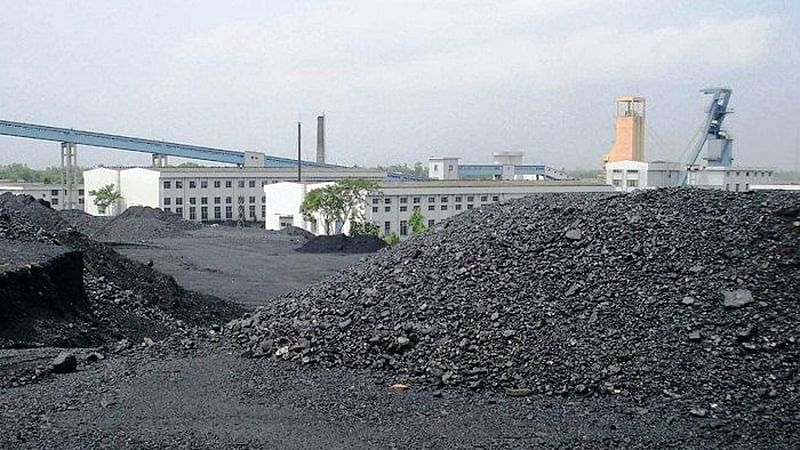Prothom Alo

Bangladesh’s lone coalmine is located at Barapukuria in Dinajpur. A thermal power plant was built near the mine and coal extraction started at Barapukuria to feed the plant.
In 2005, the plant was commissioned. Initially its power generation capacity was 250 megawatt (MW). Later, inclusion of a new generation unit enhanced it capacity to 525MW. But the plant never has generated power at its full capacity. For long, the national grid receives 150MW maximum or less than half of the capacity, from the plant.
The question is, why does the high capacity power plant remain less productive? Is there any technical glitch in any generation unit? Or, is there shortage in coal supply? Or both?
If there is a shortage in coal supply, what is reason behind this? What is the future of the coalmine and the power plant dependent on it?
By any standards, Barapukuria coalmine is a small one with a projected production capacity on 1 million tonnes per annum while the power plant is of medium category.
However, the two key point installations seem crucial ones supplying a significant amount of electricity across the northern Bangladesh. Besides, experience of handling the mine and the plant with local coal will help Bangladesh get guidelines to further utilise the own resources.
This is to be noted that the government policy highly promotes total dependency on imported coal to run a number of under-construction thermal power plants and the proposed ones.

These issues pertaining the coalmine hardly came to public attention as did the 2018 coal theft scam. At the time there was a possibility of the Barapukuria plant facing closure due to 142,000 tonnes of coal found missing from the Barapukuria coal depot. This created a stir in the country’s energy sector. A number of probe committees investigated the incident and involvement of people concerned.
Some of the probe committees identified that the shortage of coal in stock was merely due to system loss while the other blamed scam in coal trade by miscalculating moisture of the product for the coal scandal. But no investigators either questioned or showed evidence of large scale coal theft. Some observers think that blanket arrest of the former managing directors of the coalmine, without specific allegations against them, was not fair.
Allegations about the coal theft or shortage are still under trial. In the meantime, the Barapukuria coalmine has resumed its usual production and supply.
The main objective of the Barapukuria coalmine operation is to feed the neighbouring coal-fueled power plant. Primarily the capacity of the power plant was 250MW with two 125MW units. Coal extraction launched at the same time of commencing the power plant.
The coal production is still being carried out by a Chinese company under an agreement which has been renewed three times so far. During the first agreement period (2005-2011), the annual average of coal production was 600,800 tonnes and the net coal demand of the plant was 444,000 tonnes per annum.

During 2011-2017 (under the first renewal of agreement), the annual average coal production was 920,000 tonnes while the plant’s coal demand was 540,000 tonnes. That means the power plant’s requirement of coal had been fulfilled by the Barapukuria coal during 2005-2017. Besides, the surplus was sold to other industries including brick kilns.
The second renewal of the agreement was done for the 2017-2021 period. In 2018, a 275MW power generation unit was added, turning the plant into a 525MW one. With the three units, the plant’s annual demand for coal reached to 1,200,000 tonnes. But the gross production of coal from the Barapukuria field could not be increased. Rather the coalmine’s annual production dwindled to 840,000 tonnes. Hence, the thermal power plant could not generate power at its full capacity.
This information suggests that the total production at the Barapukuria coalmine exceeded the net demand of coal for the power plant during 2005-2017 period. Production of the mine could not be enhanced despite an increase of demand due to the third power generation unit was installed in 2018. The rate of coal production was falling as the complications in coal mining including geological issues and deepening coal beds had been intensifying.
The ongoing mining in the centre of the coalfield would be completed by 2022 and the next phase would bring the north part of the coalfield under mining. It has been presumed mining the north part would produce less coal than the current production rate.
In that case, the gap between coal production from Barapukuria and the coal demand for the power plant would widen more. From where will the Barapukuria power plant collect coal to fulfill its deficit?
There is no second coalmine in Bangladesh from where the deficit of the coal can be supplied. Imported coal for the Barapukuria power plant will be highly expensive. And such arrangement will increase the power generation costs at the plant.
There is no significant planning for increasing power generation by changing the method of coal mining. It can be presumed that a large part of the plant’s generation unit will have to lie idle. HWere the question arises– what was the logic behind investing taxpayers’ money in adding a third unit to the plant despite no confirmation about a continuous coal supply?
There was no promise by the Barapukuria Coal Mining Company to supply additional coal for the third unit, officials said. Still a question remains valid–who were responsible for this?
*Badrul Imam os honorary professor at the University of Dhaka
*This article appeared in the print and online editions of Prothom Alo, has been rewritten in English by Sadiqur Rahman










